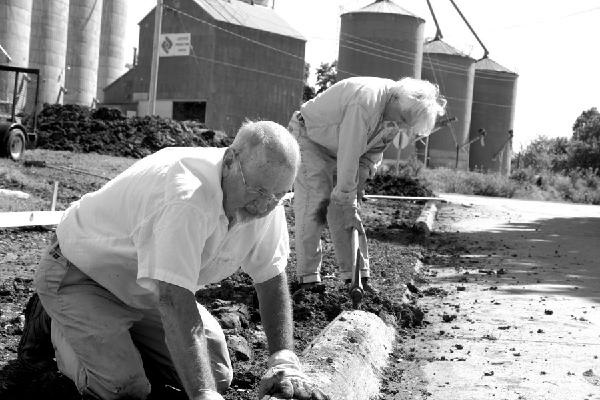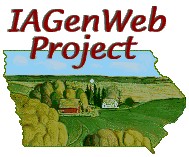Part of the IAGenWeb Project
This site is supported by Friends of IAGenWeb |
American Public Health Association
by Don McCormick

Westward expansion owes much to the railroad. The day the Union Pacific tracks joined those of the Central Pacific Railroad at Promontory, Utah in 1869 is recognized as one of the most significant historical events in transportation on the North American continent. The connection of these two railroads bridged a 2,000 mile stretch of land, reducing a four- to six-month journey to a mere six days.
Since this time, America has seen rail systems explode, evolve, and in many cases fall into disuse. "While not necessarily related, our country's collective waistline has also experienced an expansion of its own in recent years," says Tim Lane, physical fitness consultant at the Iowa Department of Public Health (IDPH). "Interestingly enough, these two problems have come together--literally and figuratively--to form a solution in Lamoni, Iowa."
It all began in 1987. The CB&Q railroad track had been abandoned leading in and out of town, and the right-of-way had reverted to the adjacent property owners. Northwest of town, the rail bed had already been plowed into fields. However, east of town, the way was more forested and hilly, and fortunately not worth the effort to clear it.
Fortunate, that is, for a small group of local residents who had become serious about walking as a form of physical activity--real groundbreaking public health stuff for Iowa in the 80's! They worked with land owners and secured informal permission to use the rail trail to the west as far as Interstate 35. With a grant from Iowa Trails and the cooperative effort of the City of Lamoni, Graceland University, and approximately 65 volunteers, a 2.2 mile strip of 10-foot wide concrete was laid in July 2002 with an additional one-mile loop around the Graceland campus. The second phase of the project focused on a two-mile trail that stretched from the high school around the north end of Home Pond ending at Liberty Hall. This work was completed in July 2005.
There was only one problem; like the Union Pacific and the Central Pacific Railroad prior to 1869, the two trails were not connected.
Enter an IDPH-administered Community Wellness Grant. With funding from the Iowa legislature and federal dollars secured by Senator Tom Harkin, the town began connecting the two trails this year. Since mid-August, a volunteer crew has been building a 0.4-mile concrete bike trail through the middle of Lamoni.
Narrow grass-encrusted sidewalks have been fork-lifted out and carted off to make way for the new structure. Heavy equipment was donated by Graceland University and local owners for trail grading, after which the volunteers shoveled gravel, placed forms, pounded stakes, and finished the concrete to a professional surface. Now only a few yards from completion, the extension will complete a nearly six-mile continuous trail that begins at the Welcome Center at Interstate 35 Exit 4.
"It's already working to improve community wellness," said Project Director Bill Morain. "So far I've lost ten pounds doing the construction."
Once completed, the Lamoni Recreational Trail system will be over five miles long. That's a pretty good length for a town of 2,450 people. But excellence of this kind is (pardon the expression) par for the course for Lamoni, which has been named three times as one of America's "100 Best Communities for Young People" by America's Promise, a non-profit organization dedicated to youth issues.
Each segment of the trail has a distinct personality. From the trailhead at the Lamoni Welcome Center, the east trail passes through a leafy green tunnel of mature forest. After passing through town, it weaves around ponds, ending at Historic Liberty Hall. Because the railroad on which the trail was built has very little grade, this part of the trail is suitable for all ages and levels of physical activity. In spring, blossoming red bud trees turn the trail into a lavender wonderland. Throughout the summer, a great variety of wildflowers take turns in the spotlight.
The Graceland Loop circles the beautifully groomed college campus with its athletic fields, brick buildings, lake, and sculptures. The west part of the trail begins at the high school and follows the railroad route to the north edge of town. From there it curves across gentle hills and open fields creating an alluring appeal to bicyclists. Views of Home Pond can be seen as the trail winds over six earthen dams to highlight several smaller ponds. As the route turns south on the far west side, there is a well-kept path to picnic tables. The trail ends in the parking lot of Liberty Hall, a restored Victorian home and museum.
| ||||



